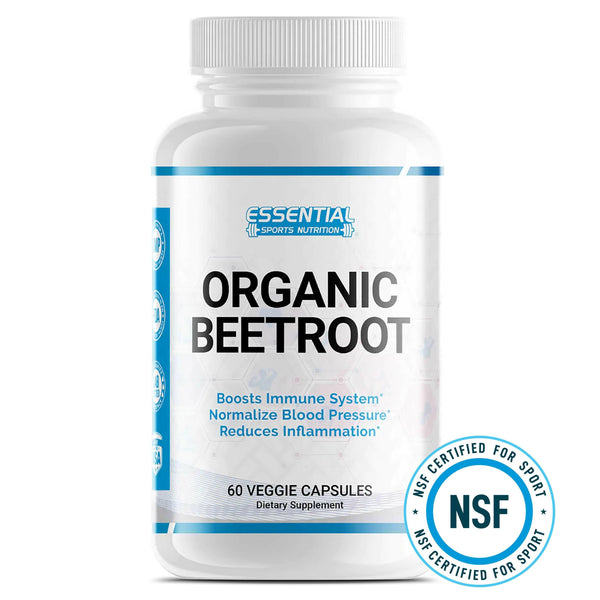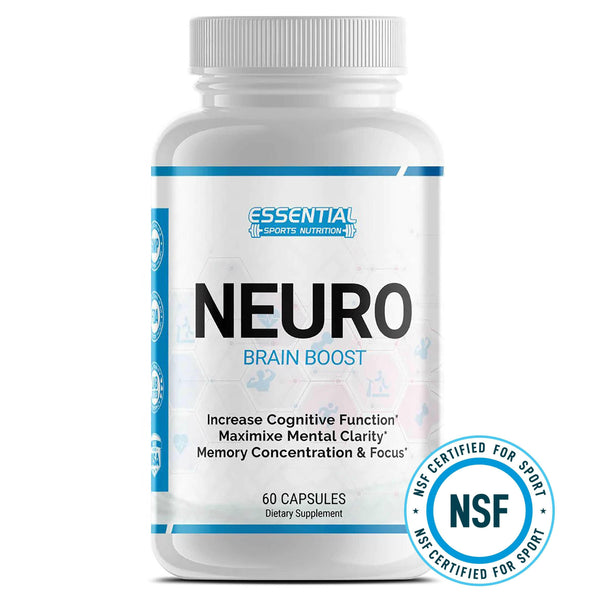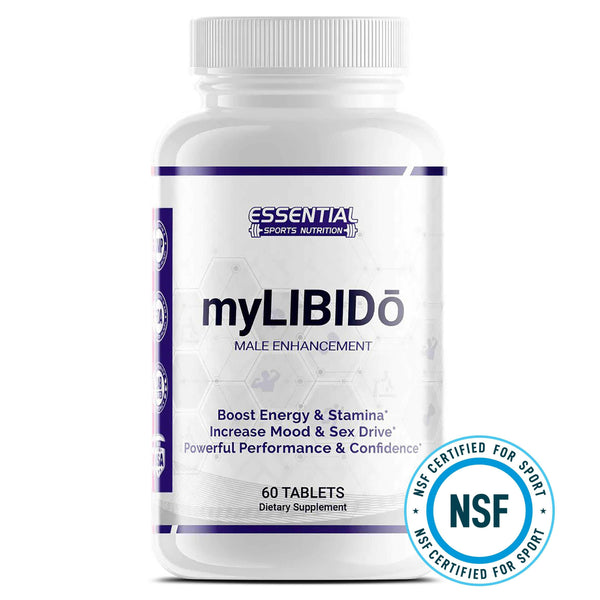Low-Carb Diets for Beginners: A Detailed Cheat Sheet to Get Started
Embarking on a journey to improve your health and lose weight can feel overwhelming, especially with the vast amount of dietary advice available. Many find themselves puzzled about which path to take for effective and sustainable results.
A low-carb diet has emerged as a popular choice among those aiming for weight loss while also seeking to enhance their overall well-being. This approach reduces the intake of carbohydrates, focusing instead on proteins, healthy fats, and vegetables.
A fact worth noting is that reducing carbohydrate intake can lead to significant improvements in blood sugar levels, often making it an attractive option for individuals managing conditions like type 2 diabetes or metabolic syndrome.
In this guide, we will walk you through the essentials of starting a low-carb diet - from understanding what foods to enjoy and avoid to navigating common challenges newcomers face.
Whether you're keen on fine-tuning your eating habits or embarking on a more structured plan like the ketogenic diet, we've got you covered.
This article is your stepping stone toward a healthier lifestyle through lower carb consumption.
Key Takeaways
- A low-carb diet can help you lose weight and improve health by cutting down on sugars and starches.
- To start, eat more proteins, healthy fats, and vegetables while keeping carbs under 50 to 100 grams a day.
- When eating out, choose dishes with meats or fish and avoid starchy sides like bread or potatoes.
- Healthy snacks for a low-carb diet include nuts, cheese, Greek yogurt with berries, and egg muffins.
- It's important to find the right balance in your carb intake to maintain energy levels and overall health.
Understanding Low-Carb Diets
Low-carb diets focus on reducing carbohydrates to help you lose weight and improve health. They can reduce hunger and boost energy by relying more on fats and proteins for fuel.

Definition of Low Carb
A low-carb diet focuses on reducing carbohydrates, typically between 50 to 100 grams per day. This approach limits foods high in carbs like sugar, grains, and starchy vegetables while increasing protein and fat intake.
The main goal is to encourage the body to burn fat for energy instead of relying on carbs.
Such diets can also go by other names like the keto diet or very-low-carb when daily intake falls below about 20 grams. By cutting down on carbohydrates, individuals may find an effective way to manage weight and improve overall health.
This strategy shifts the body's metabolism toward burning fats, leading to potential benefits such as better blood sugar control and reduced hunger levels.
Benefits of Low Carb Diets
Low-carb and ketogenic diets bring noticeable weight loss. They improve major heart disease risk factors too. This style of eating cuts down on starches and sugars, pushing the body into fat-burning mode.
It's supported by a study in Obesity Reviews journal which links lower carbohydrate intake with reduced body weight.
Eating fewer carbs can lead to several health benefits, including lower blood sugar and better mental clarity. People also report having a calmer digestive system after cutting down on carbohydrates.
Furthermore, low carb diets are great for reducing cravings. They help maintain a calorie deficit by increasing protein and fats intake, aiding in weight management.
Food Lists for What to Eat on a Low Carb Diet
Eating right is key on a low-carb diet. Discover foods that fuel your body without adding extra carbs.
Essential Foods to Include
Starting a low-carb diet requires knowing what foods to include. Focus on high-quality proteins, fats, and above-ground vegetables to stay on track.
- Meats: Beef, lamb, pork, and chicken are great sources of protein that have zero carbs. These meats support muscle maintenance and growth while keeping you full.
- Fish: Favorites like salmon, trout, haddock, and tuna not only provide quality protein but are also rich in omega-3 fatty acids which boost heart health.
- Eggs: Both whole eggs and egg whites are excellent for a low-carb diet because they offer essential vitamins and minerals alongside high-quality protein.
- Above-ground Vegetables: Opt for broccoli, cauliflower, spinach, and zucchini. They're low in carbs but high in fiber, vitamins, and minerals.
- Cheese: With zero carbohydrates and high fat content, cheese is an ideal snack or meal addition for those cutting carbs.
- Nuts and Seeds: Almonds, walnuts, flaxseeds, and chia seeds provide healthy fats, fiber, and are low in net carbs making them perfect for snacking.
- Oils: Fats like olive oil contain monounsaturated fats that are beneficial for heart health. Use them in cooking or as salad dressings without adding any carbs.
- Low-Carb Dairy: Besides cheese, other full-fat dairy products like butter and cream can be included for their minimal carb content while adding flavor to meals.
- Legumes (in moderation): While some legumes are higher in carbs, options like green beans and black soybeans can fit into a low-carb meal plan when eaten in small amounts.
- Fats & Oils such as coconut oil: These can help increase your fat intake while keeping carbs low if you're aiming for a ketogenic state.
Foods to Limit
Eating the right foods is key on a low-carb diet. Some foods, though not completely off-limits, should be limited to maintain a successful low-carb lifestyle.
- Bread: Even whole grain bread can add up in carbs. Choose options with the lowest glycemic index or enjoy in moderation.
- Sweets: Foods high in added sugar can spike blood sugar levels and disrupt your diet. Opt for natural sweeteners like stevia when you need a sweet fix.
- Starchy vegetables: Potatoes, corn, and peas are high in carbohydrates. Eat these in smaller amounts compared to non-starchy veggies like leafy greens.
- Certain fruits: Fruits like bananas and grapes are higher in sugars. Berries offer a lower carb alternative but still enjoy sparingly.
- Cereal: Most cereals are packed with sugar and processed grains. Look for low-carb alternatives or use nuts and seeds for crunch.
- Crackers and rice: These can quickly increase your carb count. Choose cauliflower rice or seed crackers as alternatives.
- Pasta: Traditional pasta is carb-heavy. Explore vegetable noodles like zucchini spirals as a swap.
- Beer and soda: Alcoholic beverages like beer and sugary drinks add empty carbs and calories. Drink water or opt for beverages without added sugars instead.
- Fast food and processed foods: Often high in carbs, unhealthy fats, and sodium, these can derail your diet efforts. Focus on whole, unprocessed foods for better health.
- Nuts and Seeds (in large quantities): While they are good sources of fat and protein, overeating nuts can contribute an unexpectedly high number of carbs; moderation is key.
How to Start a Low-Carb Diet
Starting a low-carb diet begins with understanding which foods are high in carbohydrates and learning to choose healthier alternatives. It involves carefully reading food labels and planning your meals to ensure you're getting the right balance of nutrients.
Low-Carb Basics
A low-carb diet focuses on eating more protein and fats instead of carbohydrates. This way of eating helps reduce sugar cravings and can lead to fat loss.
- Understand Carbs: Learn that not all carbs are bad. Focus on cutting out refined carbs like white bread and sugar, but keep healthy ones like vegetables.
- Count Your Carbs: Use a food diary or an app to track your daily carb intake. Aim for a number that supports your goals, often between 20-50 grams per day.
- Eat More Protein: Include high-quality protein sources in every meal, such as meat, fish, eggs, and nuts. Protein helps you feel full longer.
- Choose Healthy Fats: Incorporate fats from sources like avocado, olive oil, and nuts into your diet. These support heart health and keep you satisfied.
- Fill Up on Vegetables: Nonstarchy vegetables like leafy greens, broccoli, and peppers should fill your plate. They're low in carbs but rich in nutrients.
- Plan Your Meals: Make a meal plan for the week to avoid reaching for convenient carb-heavy foods. Planning ensures you have healthy options available.
- Read Food Labels: Always check nutrition facts labels for hidden sugars and carbs in packaged foods. Knowing what's in your food helps you make better choices.
- Stay Hydrated: Increase your water intake while lowering carbs to help prevent dehydration and support overall health.
- Adjust Gradually: If you're new to this diet, ease into it by slowly reducing carb-heavy foods instead of cutting them out all at once.
- Listen to Your Body: Pay attention to how different foods affect you and adjust accordingly. Not everyone thrives on the same balance of macronutrients.

Counting Carbs
Counting carbs is a key part of starting a low-carb diet. It helps you stay within your daily carb limit and reach your goals.
- Learn what foods contain carbs: Carbohydrates hide in places you might not expect, including fruits, vegetables, and dairy products. Get familiar with these sources to make smarter food choices.
- Check food labels: Food packaging provides valuable information about the carb content per serving. Use this data to track how much you're consuming.
- Use a carb tracking app: Several apps can help you log your daily intake of carbohydrates. They often include databases with nutritional information for a wide range of foods.
- Measure portions accurately: Serving sizes can be deceiving. Use measuring cups or a digital scale to ensure your portion sizes match the serving sizes on food labels or in your tracking app.
- Keep a food diary: Writing down everything you eat and drink can provide insights into your carb consumption patterns. This habit makes it easier to adjust if needed.
- Be mindful of 'net carbs': Some people subtract fiber from the total carbs to calculate net carbs, as fiber doesn't spike blood sugar levels like other carbs do. Consider this approach if it aligns with your dietary goals.
- Plan your meals ahead of time: Meal planning helps prevent unexpected high-carb meals and snacks. Plan each day's menu around low-carb foods to avoid going over your carb limit.
Avoiding Extreme Carb Restrictions
Cutting carbs too much can lead to problems. Your body needs at least 120 grams of carbs a day to work well. Don’t fall into the trap of eating too few carbs. This can cause issues like low energy and digestion problems.
It’s important to find the right balance in your carb intake. This helps keep your energy levels steady and supports good health. Make sure you're eating enough fruits, vegetables, and whole grains.
These foods give you necessary vitamins, minerals, and fiber while fitting into a low-carb diet.
A Sample Menu for a Low-Carb Meal Plan

Discover how easy and delicious eating low-carb can be with our three-day meal plan, perfect for beginners.
Day 1
Starting a low-carb diet can feel exciting. It's a journey towards healthier eating habits. Here's what Day 1 might look like:
- Breakfast: Begin your day with scrambled eggs cooked in olive oil, add spinach for fiber and tomatoes for vitamins. This meal is rich in protein and low in carbs, making it a perfect start.
- Snack 1: Enjoy a small handful of almonds. They're high in healthy fats and protein but low in carbohydrates.
- Lunch: Prepare a chicken salad with lettuce, cucumber, and celery. Use olive oil as a dressing for healthy fats and lemon juice for flavor. Chicken provides the protein intake needed, while the vegetables keep it balanced.
- Snack 2: Slice an avocado in half and sprinkle some salt on it. Avocados are full of good fats that keep you full and energetic without adding carbs.
- Dinner: Grill salmon with asparagus on the side. Salmon boosts your intake of omega-3 fatty acids and high-quality proteins, while asparagus is low in carbs but rich in several nutrients.
- Snack 3: Have a slice of cheese or some peanut butter on celery sticks. Both options offer a good mix of fat and protein without exceeding your carb limit.
Day 2
Day 2 focuses on keeping carbs under 20% of total calories. This plan uses real foods to keep your diet balanced and tasty.
- Breakfast: Enjoy a spinach and cheddar cheese omelet. Eggs provide high-quality protein, while spinach offers vitamins, and cheese adds calcium.
- Morning Snack: Grab a handful of almonds. Almonds are rich in healthy fats, fiber, and protein, making them perfect for a low-carb diet.
- Lunch: Have a chicken salad with olive oil dressing. Chicken is an excellent source of protein; mixed greens are full of nutrients. Olive oil is a heart-healthy fat that helps you stay full.
- Afternoon Snack: Eat few slices of avocado. Avocados are loaded with potassium and fiber. They're also high in monounsaturated fats, which can help improve cholesterol levels.
- Dinner: Prepare salmon with asparagus on the side. Salmon is rich in omega-3 fatty acids and proteins. Asparagus is low in carbs but high in several vitamins, including K.
- Evening Snack: Savor some greek yogurt mixed with a few raspberries. Greek yogurt provides probiotics for gut health, and raspberries add sweetness without too many carbs.
Day 3
Day 3 of the low-carb meal plan is designed to provide balanced nutrition while keeping carbs low. Each meal and snack meets specific calorie and carbohydrate goals to support a healthy diet.
- Breakfast: Start with scrambled eggs cooked in butter, topped with avocado slices. This meal is rich in healthy fats and proteins, helping you feel full longer.
- Morning Snack: Enjoy a small bowl of mixed berries like strawberries and blueberries. Berries are low in carbs but high in fiber, making them a perfect snack.
- Lunch: Prepare a large salad with leafy greens, grilled chicken strips, cherry tomatoes, feta cheese, and olive oil dressing. This mix combines lean protein with healthy fats and minimal carbs.
- Afternoon Snack: Have a handful of almonds. Nuts are great for a low-carb diet because they're rich in energy and help stave off hunger between meals.
- Dinner: Cook salmon fillets with lemon-butter sauce served alongside steamed broccoli. Salmon is an excellent source of omega-3 fatty acids, and broccoli is packed with vitamins without being high in carbs.
Advice for Eating Out on a Low-Carb Diet

Plan your meals before heading out to eat. Look for low carb food options on menus and choose dishes with grilled, baked, or steamed proteins like chicken, fish, or steak. Avoid starchy sides such as bread, rice, or potatoes.
Go for non-starchy vegetables or a side salad instead. Watch out for hidden carbs in sauces and dressings; pick oil and vinegar when possible.
Ask the restaurant staff for modifications to make your meal fit a low-carb diet. You can often replace fries with vegetables or skip the bun on burgers. If you enjoy alcohol, opt for dry wine or spirits mixed with zero-carb mixers.
Making these choices helps maintain your diet without missing out on social outings.
Healthy Low-Carb Snacks

Finding the right snacks can make all the difference on a low-carb diet. They keep hunger at bay and add variety to your food intake. Here is a list of healthy, low-carb snacks that are both delicious and easy to prepare:
- Egg Muffins: Mix eggs with veggies like spinach and bake them in muffin tins. These are not only great for breakfast but also as a snack any time of the day.
- Cheese Slices with Almonds: Pair full-fat cheese slices with a handful of almonds for a quick snack rich in protein and healthy fats.
- Greek Yogurt and Berries: Opt for full-fat Greek yogurt and mix it with strawberries or blueberries. It's a sweet treat that’s low in carbs.
- Celery Sticks with Cream Cheese: Spread cream cheese on celery sticks for a crunchy and satisfying snack.
- Avocado Slices: Sprinkle some salt on avocado slices or mash them up with lime juice for an instant, nutritious snack.
- Broccoli or Cauliflower Florets: Dip these veggies in hummus or eat them plain for a fiber-rich, filling snack.
- Olives: Olives are high in healthy fats and very low in carbs, making them an ideal savory option.
- Cucumber Slices with Hummus: Combine cucumber slices with hummus for a refreshing and tasty snack.
- Hard-Boiled Eggs: They’re easy to make ahead of time and perfect for snacking on the go.
- Handful of Berries: A small serving of raspberries, blackberries, or strawberries can satisfy your sweet craving without adding too many carbs.
- Nut Butter Packet: Single-serve packets of almond or peanut butter can be eaten alone or smeared on celery sticks.
- Turkey Roll-Ups: Spread cream cheese over turkey slices and roll them up for a high-protein, grab-and-go snack.
Potential Side Effects of a Low-Carb Diet

Starting a low-carb diet might lead to some side effects, but learning how to manage them can keep you on track.
Induction Flu
Many people feel sick after they begin a low-carb, high-fat diet. This is often called the keto flu. Symptoms include headache, tiredness, and feeling foggy. These problems happen because the body is getting used to burning fat for energy instead of carbs.
The keto flu shows up two to seven days after starting the diet.
To deal with these symptoms, staying hydrated and eating foods rich in minerals can help. Some find relief by increasing their intake of salt and water during this adjustment period.
It's important to listen to your body and not push too hard during this time. With patience, these symptoms usually pass within a week or so, allowing you to continue on your low-carb journey with more comfort.
Other Common Issues
Starting a low-carb diet can lead to several common issues. It’s important to know these so you can manage them effectively.
- Dehydration often happens early in a low-carb, high-fat diet. Your body uses up stored carbohydrates which hold water. Drink plenty of water and eat hydrating foods.
- Constipation is another issue due to less fiber intake from cutting out whole grains and certain fruits. Include low-carb, high-fiber vegetables like broccoli and leafy greens in your meals.
- Bad breath occurs when your body enters ketosis, producing chemicals like acetoacetate. Stay hydrated and maintain good dental hygiene to minimize this effect.
- Sleep disturbances may occur as your body adjusts to a low-carb lifestyle. Try reducing caffeine intake and establish a regular bedtime routine.
- Cravings for sugar and carbs are common as your body adapts to burning fat for fuel instead of carbohydrates. Keep healthy fats and proteins handy to satiate hunger without carbs.
- Mood swings sometimes happen due to changes in blood sugar levels during the initial phase of the diet. These usually improve as your body stabilizes on the new diet plan.
- Temporary hair loss may be experienced by some people, likely due to stress on the body from dietary changes or not getting enough nutrients like protein or iron.
- Muscle cramps can occur if you're not getting enough minerals such as magnesium and potassium, which are lost along with fluid on a low-carb diet.
- Fatigue in the early stages is often due to the "keto flu," characterized by symptoms similar to influenza caused by reduced carbohydrate intake.
- Irritability is sometimes reported, especially during the transition phase as the body switches energy sources from carbs to fats.
Less Common Problems
Ketosis, a state aimed for in low-carb, high-fat diets like the Atkins and South Beach diet, can lead to less frequent issues such as bad breath. This happens because the body produces ketone bodies like beta-hydroxybutyrate during fat breakdown.
These ketones can cause your breath to have a fruity or unusual smell. Besides this, some people might experience headaches, fatigue, and weakness as their bodies adjust to burning fat instead of carbohydrates for energy.
Other concerns include long-term effects on heart health and kidney function due to changes in lipid levels and increased urine production. While following a low-carb plan, it's also possible to face constipation due to reduced intake of fiber-rich foods like oatmeal and sweet potatoes.
Fatigue could happen when the body runs low on carbs before it efficiently switches over to using fats and oils for fuel.
How to Stick with a Low-Carb Diet

Set clear and achievable goals to stay motivated on a low-carb diet. Focus on consuming foods high in protein, healthy fats, and non-starchy vegetables instead of counting calories obsessively.
Making smart choices becomes easier when you plan meals ahead. Always have low-carb snacks ready to avoid reaching for junk food.
Get creative in the kitchen by trying new low-carb recipes that add excitement to your meal plans. Include intermittent fasting or a high-fat diet approach if it suits your lifestyle but avoid feeling pressured into strict dietary restrictions that don’t work for you.
Listening to your body’s needs and adjusting your diet accordingly helps maintain long-term commitment without feeling deprived or overwhelmed.
Tips to Help You Follow A Low Carb Diet

A few tips go a long way to help you manage your daily carb intake, choose vegetarian options, and adjust diets for diabetes management or prevention.
How to Stay Under 20 Carbs a Day
Staying under 20 carbs a day requires careful planning and smart food choices. Focus on filling your plate with low-carb vegetables like leafy greens, broccoli, and cauliflower. Include high-quality proteins such as chicken, fish, and eggs to keep you full and satisfied.
Opt for healthy fats from sources like avocados, nuts, and seeds. Read labels when buying packaged foods to avoid hidden sugars that can add up quickly.
Swap out high-carb snacks for options that pack a nutritional punch without the carbohydrates. Cheese cubes, olives, and slices of turkey or ham are good choices. Drink plenty of water throughout the day to stay hydrated; sometimes thirst is mistaken for hunger which could lead you to eat more than needed.
Use urine test strips if necessary to monitor your state of nutritional ketosis ensuring you're staying on track without exceeding your carb limit.
Suitable Low-Carb Diet for Vegetarians
Vegetarians can find it challenging to keep their carbohydrate intake low because many vegetarian meals are high in carbs from grains, starchy vegetables, and fruits. Planning carefully and making informed food choices are crucial steps.
They must focus on including protein-rich plant foods like tofu, lentils, and nuts to meet their nutritional needs without relying heavily on carbohydrates.
For vegetarians following a ketogenic or another low-carb high-fat diet, options do exist despite the challenges. They need to explore alternatives such as avocados for healthy fats, along with leafy greens and non-starchy vegetables to fill their plates.
This approach ensures they maintain a balanced diet while adhering to their carb restrictions. Being mindful of nutrient intake helps prevent common issues associated with restrictive diets.

Low-Carb Diet for Diabetes
A low-carb diet shows significant promise for people with diabetes. By cutting down on carbohydrates, individuals can manage their blood sugar levels more effectively. This approach is beneficial for both type 1 and type 2 diabetes.
Research suggests that the fewer carbs consumed, the better it is for reducing blood sugar fluctuations. Following a low-carb diet helps in improving overall blood sugar management.
For those managing prediabetes or diabetes, eating foods high in protein and fats instead of carbs can lead to weight loss and reduce cravings. There are plenty of resources available, including diabetic-friendly recipes and meal plans tailored to a low carbohydrate intake.
It's important to know which foods to embrace and which to avoid for maintaining health while managing diabetes through diet.
Conclusion

Starting a low-carb diet brings many benefits, from weight loss to improved health. You've learned which foods fuel your body best and how to enjoy meals without the extra carbs. Remember, counting carbs doesn't have to be hard; it can become second nature with practice.
Are you ready to make these simple changes for a healthier you? Let your journey begin today, and see where a low-carb lifestyle can take you! Remember, any diet plan works best with supplemented with consistent physical activity.
Low Carb Eating FAQs
Q: What is a low-carb diet and how does it work?
A: A low-carb diet focuses on reducing carbohydrates, like sugars and starches, and increasing intake of proteins and fats. This approach can help your body use fat as its main energy source instead of carbs.
Q: How does a low-carb diet differ from a ketogenic diet?
A: While both low-carb and ketogenic diets restrict carbohydrate intake, a ketogenic diet is more strict, typically limiting carbohydrate consumption to around 20-50 grams per day in order to induce a state of ketosis where the body burns fat for fuel.
Q: What are the benefits of following a low-carb diet?
A: Following a low-carb diet may help with weight loss, improve blood sugar levels, reduce cravings for unhealthy processed foods, and may have potential benefits for individuals with type 2 diabetes.
Q: Can I follow a low-carb diet as a beginner?
A: Yes, a low-carb diet can be followed by beginners. It's important to start gradually, make sure you include a variety of nutritious foods, and consult with a healthcare professional if you have any health concerns.
Q: What can I eat on a low-carb meal plan?
A: You can eat foods like lean proteins, leafy greens, nuts and seeds, healthy fats like avocado and olive oil, and low-carb fruits and vegetables while following a low-carb meal plan.
Q: Is a low-carb or keto diet suitable for everyone?
A: While many people find success with low-carb or keto diets, it may not be suitable for everyone. Individuals should consider their unique health needs and consult with a healthcare provider before starting any new dietary plan.
Q: How many grams of carbohydrates should I aim for on a low-carb diet?
A: The specific amount of carbs for a low-carb diet can vary, but generally, most low-carb diets recommend consuming anywhere from 20-100 grams of carbs per day, depending on individual goals and tolerance.
Q: What are some sample low-carb meal options?
A: Sample low-carb meals could include grilled chicken with roasted vegetables, a spinach salad with grilled shrimp, or a stir-fry with tofu and low-carb vegetables like broccoli and bell peppers.
Q: Can eating at restaurants fit into a low-carb diet plan?
A: Yes! When eating out, look for dishes that are high in protein and vegetables but low in sugars or starches to keep with your low-carb approach.
Q: Are there any health conditions that might improve with a low-carb diet?
A: Studies have shown that diets lower in carbohydrates can help with conditions such as irritable bowel syndrome (IBS) by reducing symptoms like diarrhea.
Q: What's the difference between a no-carb diet and a low carb, high fat (LCHF) diet?
A: A no-carb diet eliminates all carbohydrate foods which is extremely restrictive; while a LCHF or Atkins Diet reduces carbs significantly but includes enough healthy fats to fuel your body without needing carbs.
Q: Is a low-carb diet more effective than a low-fat diet?
The effectiveness of a low-carb versus a low-fat diet depends on various factors, including individual preferences, metabolic health, and adherence. Research suggests that both types of diets can lead to weight loss and improvements in health markers, but the most effective diet for an individual may vary.
Some people may find better results with a low-carb diet due to its effects on appetite regulation and insulin sensitivity, while others may prefer a low-fat diet for its focus on whole grains and plant-based foods. Ultimately, the key to success is finding a sustainable dietary approach that aligns with individual goals and preferences.






























